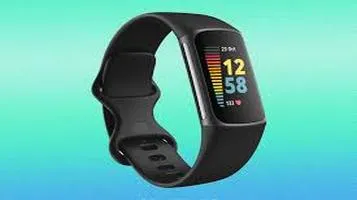Review of Touchless Faucets: A Modern Marvel in Home and Commercial Plumbing
Touchless faucets, also known as automatic or hands-free faucets, are a modern innovation designed to enhance hygiene and water efficiency. These faucets utilize infrared sensors or motion detectors to activate the water flow, eliminating the need for manual operation. When a user's hands are placed under the spout, the sensor detects the motion and triggers the water to flow, stopping when the hands are removed. This touch-free mechanism significantly reduces the risk of cross-contamination, making touchless faucets ideal for public restrooms, healthcare facilities, and kitchens. Additionally, they contribute to water conservation by automatically shutting off, preventing wastage. With sleek designs and advanced technology, touchless faucets combine convenience, cleanliness, and eco-friendliness, making them a popular choice for modern homes and commercial spaces.

In an era where technology seamlessly integrates into our daily lives, touchless faucets stand out as a prime example of innovation meeting practicality. These advanced fixtures, which can be found in both residential and commercial settings, offer a host of benefits that make them a compelling choice for anyone looking to upgrade their plumbing. With their sleek design, hygienic advantages, and water-saving capabilities, touchless faucets are quickly becoming a staple in modern bathrooms and kitchens. However, like any technology, they are not without their drawbacks. This review will delve into the various aspects of touchless faucets, examining their pros and cons to provide a well-rounded perspective.
Design and Aesthetics
One of the first things you notice about touchless faucets is their sleek, modern design. These fixtures often feature minimalist lines and a polished finish, making them a stylish addition to any space. Whether you prefer a contemporary or traditional aesthetic, there's likely a touchless faucet that will complement your décor. Many manufacturers offer a variety of finishes, including chrome, brushed nickel, and matte black, allowing you to customize the look to suit your taste.
Hygiene and Cleanliness
Perhaps the most significant advantage of touchless faucets is their contribution to improved hygiene. In a world increasingly aware of the importance of reducing germ transmission, these fixtures offer a hands-free solution that minimizes contact with surfaces. This is particularly beneficial in public restrooms, where multiple users can contribute to the spread of bacteria and viruses. By eliminating the need to touch the faucet, users can wash their hands more effectively and with greater confidence in their cleanliness.
In residential settings, touchless faucets can be a boon for households with young children or individuals with compromised immune systems. The reduced need for physical contact with the faucet not only keeps the fixture itself cleaner but also helps in maintaining overall household hygiene.
Water Conservation
Touchless faucets are also celebrated for their water-saving capabilities. Traditional faucets can often be left running longer than necessary, leading to significant water waste. Touchless models, equipped with sensors that detect the presence of hands, automatically shut off the water flow when not in use. This feature ensures that water is only used when absolutely needed, making it an environmentally friendly option. In fact, many touchless faucets are designed to meet water efficiency standards set by organizations like the Environmental Protection Agency (EPA), further underscoring their eco-friendly credentials.
Ease of Use and Accessibility
The hands-free operation of touchless faucets makes them incredibly user-friendly. This is particularly advantageous for individuals with disabilities or limited mobility, who may find traditional faucets difficult to operate. By simply placing their hands under the spout, they can easily access water without the need for twisting or turning knobs. This ease of use extends to children as well, who can struggle with conventional faucets.
Installation and Maintenance
While the benefits of touchless faucets are numerous, there are some considerations to keep in mind regarding installation and maintenance. Installing a touchless faucet can be more complex than a traditional one, often requiring electrical work to connect the sensor and power source. For those not comfortable with DIY projects, professional installation may be necessary, adding to the overall cost.
Maintenance is another factor to consider. While touchless faucets are designed to be durable, the electronic components can be susceptible to issues over time. Sensors may need recalibration, and batteries (in battery-operated models) will require periodic replacement. Additionally, hard water can lead to mineral buildup on the sensors, potentially affecting their functionality. Regular cleaning and occasional professional servicing can help mitigate these issues, but they do add to the long-term maintenance requirements.
Cost
The initial cost of touchless faucets can be higher than traditional models, which may be a deterrent for some consumers. However, it's essential to consider the long-term savings associated with water conservation and the potential reduction in maintenance costs due to less wear and tear on the faucet. Additionally, the enhanced hygiene benefits can contribute to overall health and well-being, which is a value that transcends monetary considerations.
Conclusion
In summary, touchless faucets represent a significant advancement in plumbing technology, offering a blend of style, convenience, and sustainability. Their modern design and hygienic benefits make them an attractive option for both residential and commercial settings. The water-saving capabilities align with current environmental priorities, and their ease of use makes them accessible to a broad range of users.
However, the higher initial cost, potential installation complexities, and maintenance requirements are factors that should be carefully weighed. For those willing to invest in these advanced fixtures, the long-term benefits are likely to outweigh the drawbacks, making touchless faucets a worthy addition to any modern bathroom or kitchen. As technology continues to evolve, we can expect touchless faucets to become even more efficient, reliable, and accessible, solidifying their place as a mainstay in contemporary plumbing.






